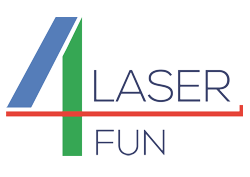Results of the work in the Laser4Fun project has been published as:
Jean-Michel Romano, Rajib Ahmed, Antonio Garcia-Giron, Pavel Penchev, Haider Butt, Olivier Delléa, Melissa Sikosana, Ralf Helbig, Carsten Werner, Stefan Dimov (2019) Subwavelength Direct Laser Nanopatterning Via Microparticle Arrays For Functionalizing Metallic Surfaces, Journal of Micro- and Nano-Manufacturing 7(1) 010901. doi:10.1115/1.4042964.
Abstract
Functionalized metallic nanofeatures can be selectively fabricated via ultrashort laser processing; however, the cost-effective large-area texturing, intrinsically constrained by the diffraction limit of light, remains a challenging issue. A high-intensity near-field phenomenon that takes place when irradiating microsized spheres, referred to as photonic nanojet (PN), was investigated in the transitional state between geometrical optics and dipole regime to fabricate functionalized metallic subwavelength features. Finite element simulations were performed to predict the PN focal length and beam spot size, and nanofeature formation. A systematic approach was employed to functionalize metallic surface by varying the pulse energy, focal offset, and number of pulses to fabricate controlled array of nanoholes and to study the generation of triangular and rhombic laser-induced periodic surface structures (LIPSS). Finally, large-area texturing was investigated to minimize the dry laser cleaning (DLC) effect and improve homogeneity of PN-assisted texturing. Tailored dimensions and densities of achievable surface patterns could provide hexagonal light scattering and selective optical reflectance for a specific light wavelength. Surfaces exhibited controlled wetting properties with either hydrophilicity or hydrophobicity. No correlation was found between wetting and microbacterial colonization properties of textured metallic surfaces after 4h incubation of Escherichia coli. However, an unexpected bacterial repellency was observed.
